One of a product manager’s primary responsibilities is ensuring their team develops and improves the right products at the right time. To do this effectively, they need a comprehensive product roadmap. But what does a truly impactful product roadmap need to include? And who should they create it for?
A 2022 study found that 48% of product managers said setting a product development vision and strategy was the most challenging part of their job.
You want to provide the best product vision aligning business objectives and end-user requirements. But where do you even start?
In this article, we'll break down the key steps to creating a successful product roadmap. By the end, you'll be able to achieve and communicate your overall product vision and meet your organizational goals.
Let’s get started.
What is a product roadmap, and why do you need one?
Before we dive into how to create a product roadmap, let’s dig a little deeper into what a product roadmap is and why you need one.
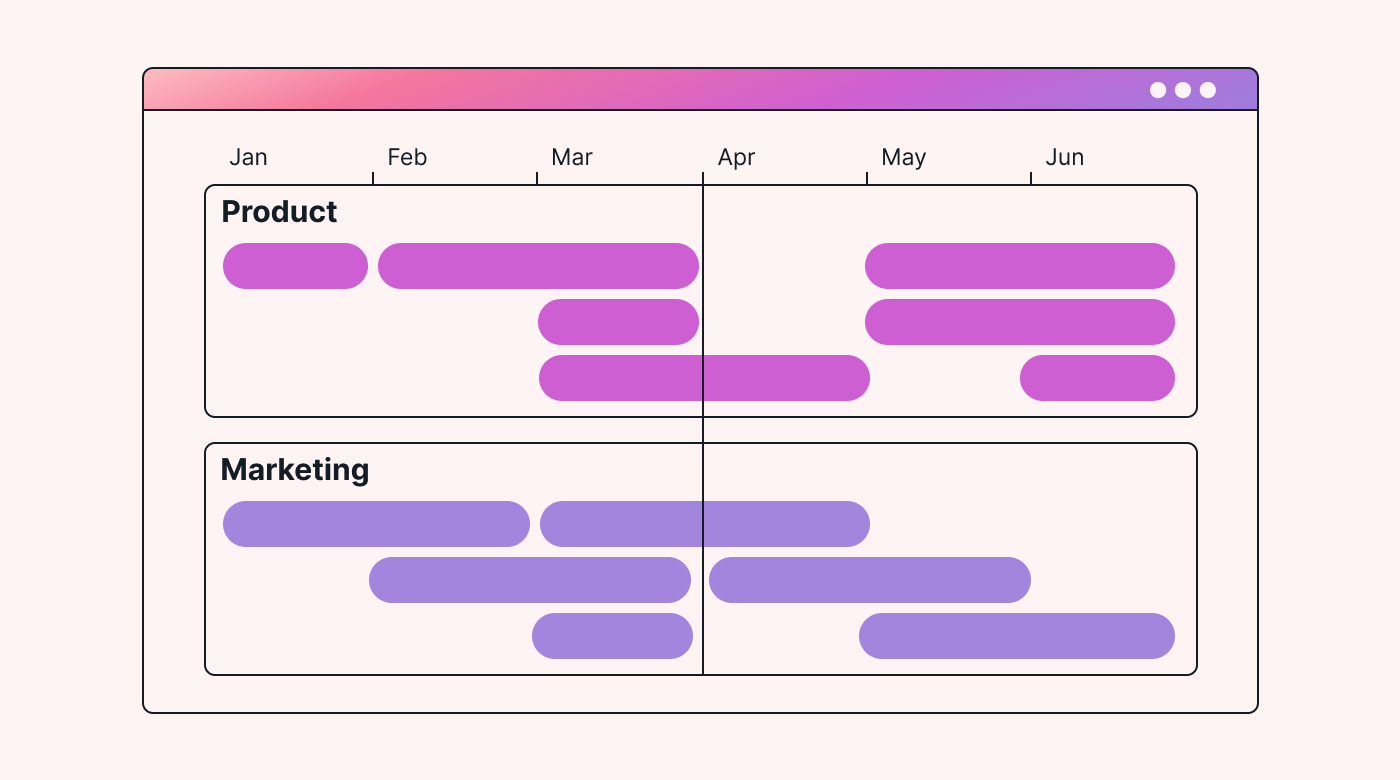 |
A product roadmap is a high-level strategic document. It helps the product development team to visualize a product strategy and communicate it effectively. The product roadmap is created as part of the product development process. Some of the stakeholders who might need to see this roadmap include the executive team, the marketing team, or the sales team. It will also require input from other teams involved in the production process. Suppliers, manufacturers, and even customers can be included in creating the product roadmap.
A product roadmap is a visual representation of the creation of a product from idea to launch. It outlines a product’s strategic objective and intended direction over a set time frame.
Product roadmaps are a visual tool for planning. While they influence product development, they are not a project management tool. This is because the roadmap will outline the key milestones and the duration of the product development process. But, it doesn’t include the tasks required to launch the product.
Breaking down and assigning tasks is a step in the execution process. Creating the roadmap is a key step in the planning phase. But this doesn't mean your product roadmap won't be useful in the execution phase of the product's development. In fact, your product roadmap will be used regularly to set key milestones, define timelines, and keep your whole team on track.
The simplest way to think about a product roadmap is that it is a visual tool with an overview of product goals for users and the organization within a set timeline. It is not a list of the to-dos of the project.
It includes information on the product’s goals, its features, the problems it solves, and the key outcomes (milestones) that will be achieved throughout the production cycle.
A product roadmap visually details the strategic ‘what’ rather than the ‘how’ of the product’s delivery.
Who is a product roadmap for?
We've discussed what a product roadmap is. We've also looked at how it acts as a visual communication tool for releasing a new product or updating an existing one. But who most benefits from the product roadmap? Who is it for?
Primarily, the product roadmap is for the product development team.
Your product roadmap will be referenced by the team members responsible for designing, developing, and launching a product in your organization.
 |
It will communicate the product teams' vision to executives and relevant departments. For example, your product roadmap will inform the marketing team to develop their own timelines around pre-launch strategy and marketing campaigns. It will also notify the sales team to get them skilled across the relevant benefits and features of the product so that they can effectively sell the product on launch.
Who is responsible for the product roadmap?
Creating the product roadmap is a team effort and will require input from everyone in the product development team. You may even require input from other departments. The front-facing customer service team will have great customer feedback data. The sales and marketing team can gather vital data on demand. All of this information will inform how your product will meet customer requirements. The product manager will likely facilitate these discussions. But the team will be responsible for creating the roadmap and keeping it updated as the product is designed, developed, and released.
What should you include in a product roadmap?
A 2022 survey of Product Managers found that only 49% felt that products and features aligned with long-term business strategy, and 47% thought they reflected users' needs. Having a plan for what will go into your product roadmap is crucial.
We've discussed some things that will typically be included in your product roadmap. Here are just some of the most important and easily overlooked things to include:
- The product's features and benefits.
- The target audience
- The overall timeline to launch
- The key milestones that must be completed to launch the product.
A product manager must ensure they have a comprehensive roadmap communicating how the product will align with business strategy and meet user needs.
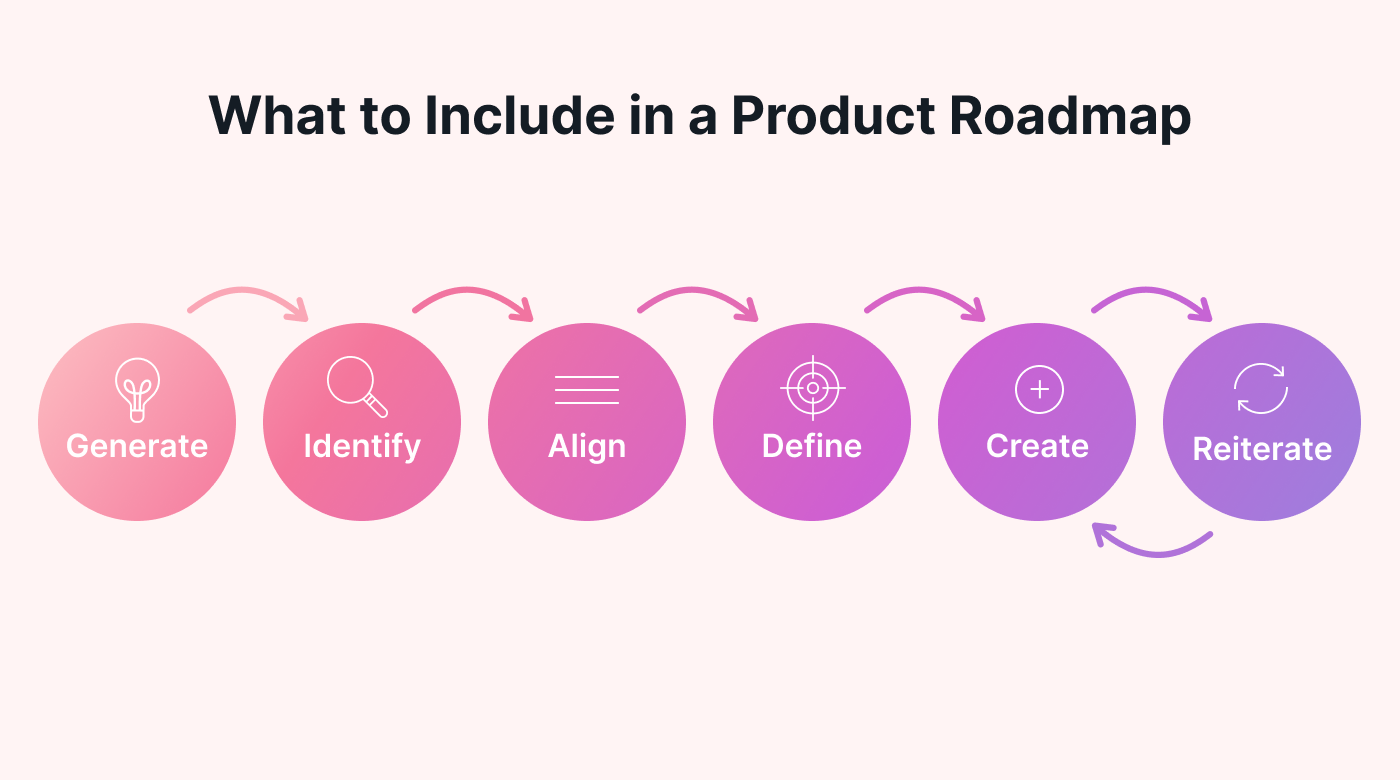 |
But what stages will you and your team need to work through to ensure your product roadmap achieves this?
1. Generate
Firstly, you'll brainstorm as a team to generate the strategic goals that need to be met within a specific period of time. When setting this timeframe, keep in mind that you will need to be able to adapt your timelines. Market changes and user feedback will influence your timeline even when the product is being created.
Define the high-level goals the team will work toward, ensuring they align with the product vision and overall business strategy behind the product's creation.
2. Identify
Engage the team in a deep dive into problem discovery. Decide as a team which problems the product will solve. Which will have the biggest impact while also achieving business goals? Review product backlogs and read client feedback. You might even interview and survey end users directly. This is where good communication with client-facing teams can yield gold, providing user stories and direct feedback on what the market wants from your products.
This stage requires the most research, requiring your team to dig into qualitative and quantitative client data. You'll want to crawl the frequently asked questions your customer service and tech teams receive. Explore common trends that appear in any of your organization's helpdesks. Review social channels for client communications to and about your brand. Listen to what your customers say about your products and how they can be improved.
Competitive research can also provide much-needed insight into how other businesses have attempted to meet market needs.
Research is a key element in creating an effective product roadmap. Yet this step is easily overlooked. Don't rush.
3. Align
Align business goals, customer needs, and market trends to create a cohesive strategy for the product. All stakeholders must understand this strategy and how it meets business goals. In this stage, it is important to collaborate with any relevant teams for their feedback and input. Share your roadmap with customer-facing teams to ensure your product meets the needs they are hearing about daily.
4. Define
Now that you have a deeper understanding of what your end users most want from your products and have a fixed timeline for production, it's time to define how successful you will measure success.
What Key Performance Indicators (KPIs) are necessary to quantify success?
How will you know when a milestone has been completed successfully?
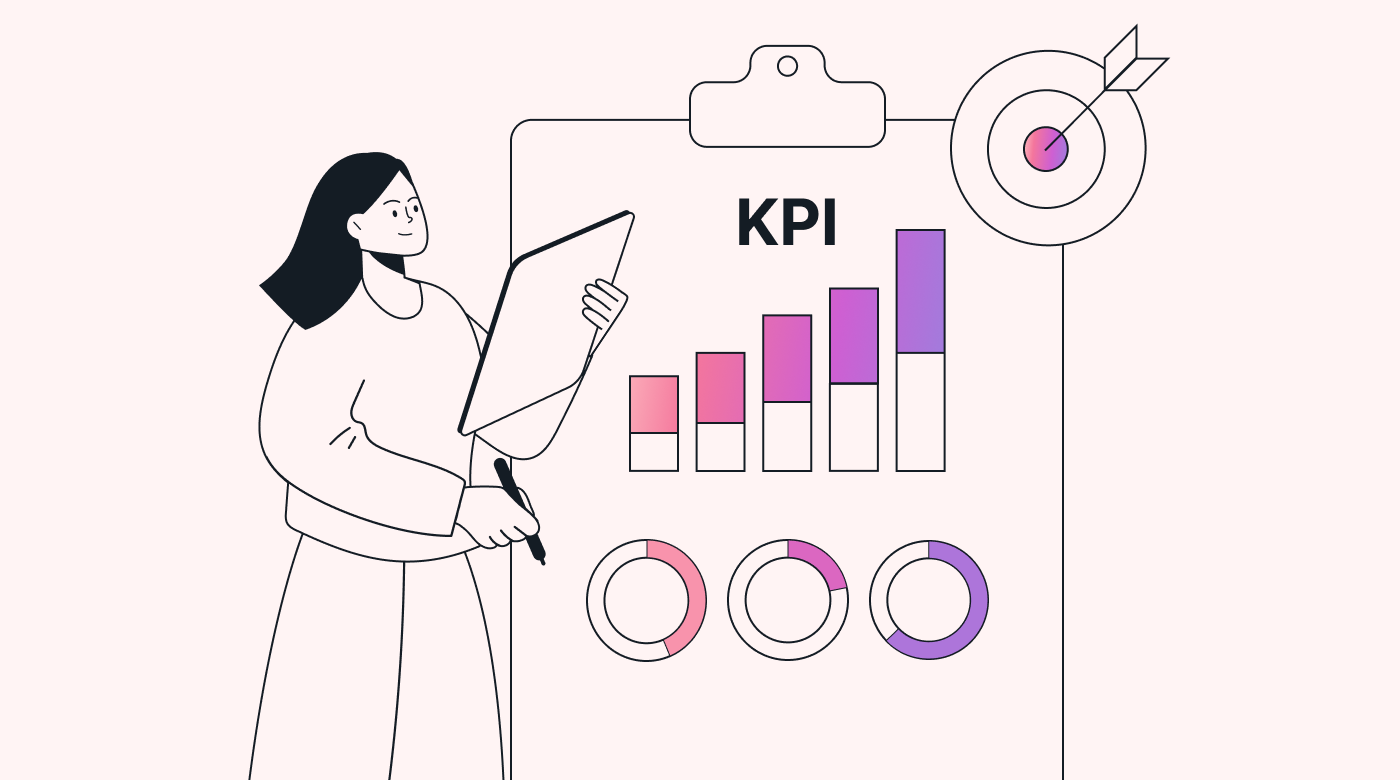 |
Are there any potential issues that you can identify in advance? Are there resource constraints? This is the time to define any potential blocks or constraints. Plan contingencies that can be implemented quickly if these issues arise during production.
At this stage, you’ll also want to define key success measures that will allow your team to measure the long-term impact of product releases over time. This will make it easier to evaluate the impact of the product release in the future, creating solid data for case studies and improvements over time.
The key here is to break down the high-level vision into manageable objectives. Make sure all milestones can be measured.
5. Create
This stage is all about prioritizing the initiatives that will create the most impact. Aim to tackle the most urgent user problems and business objectives first.
Scope the resources that will be required to execute the project. This will give impacted department heads time to plan and provide important input. Use the many available product roadmap templates online to create your first roadmap! Don’t worry - we’ll explore this in more detail in the next section.
6. Reiterate
A product roadmap will never be complete until the product has been designed, developed, and released. Ensure all relevant team members keep the roadmap up to date with any changes or issues as production progresses.
Review the product roadmap regularly and reiterate as changes occur.
Product roadmaps help product teams stay organized. It allows product teams to communicate with stakeholders. It also provides key information to make data-driven decisions. But how do you actually create one? Are there different types?
The different types of product roadmaps and how to create one – with examples
A product roadmap isn’t a project management tool specifically, but it can use common project management methodologies. The two most common types of roadmaps are Agile and Waterfall roadmaps.
The product manager should consider how the roadmap will be translated in the execution and delivery phases. Choose one of the following methodologies depending on how your production team works. This will keep you all on the same page.
Agile product roadmaps
Agile methodology depends on iterative development. This means that teams work in short cycles to provide incremental improvements to a product or service. It allows for multiple priorities to be worked on at once, making it a more flexible approach to production.
An Agile roadmap can look a little different from more traditional product roadmaps. It has a much more flexible approach that is best used where products are expected to hit critical roadblocks in development, and adjustments will be required. An example of an organization that might use an Agile roadmap is an app development company.
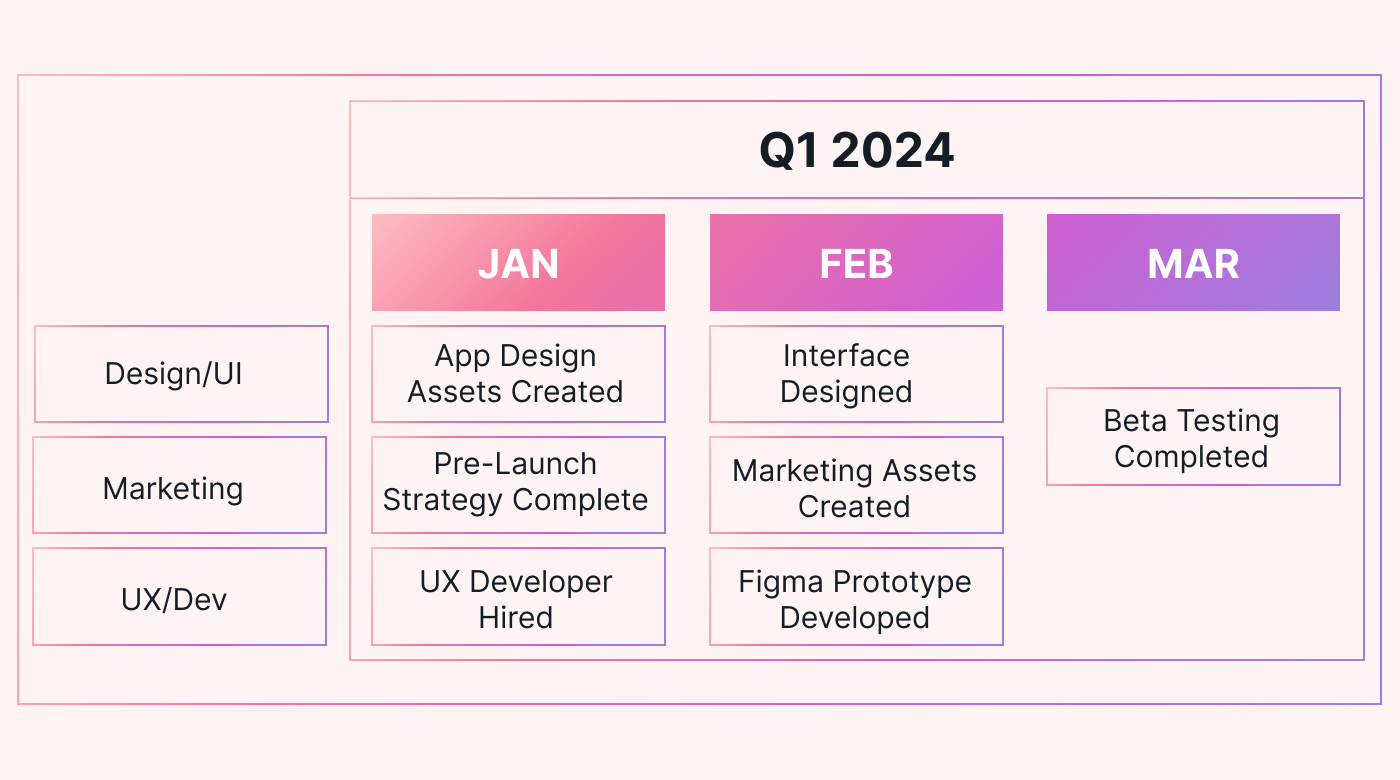 |
The key to Agile roadmaps is that they must be updated regularly by the Agile team to reflect any changes and status updates.
Agile roadmaps are typically used where multiple teams work across multiple deliverables simultaneously.
Waterfall product roadmaps
Waterfall methodology, however, has a more sequential focus. Each milestone is completed before the next can be started.
A waterfall product roadmap differs from an Agile product roadmap because the milestones are reached sequentially and one at a time rather than running concurrently.
Think of it as a chain of linked dependencies in a row. One isn't able to be started until the previous one is completed.
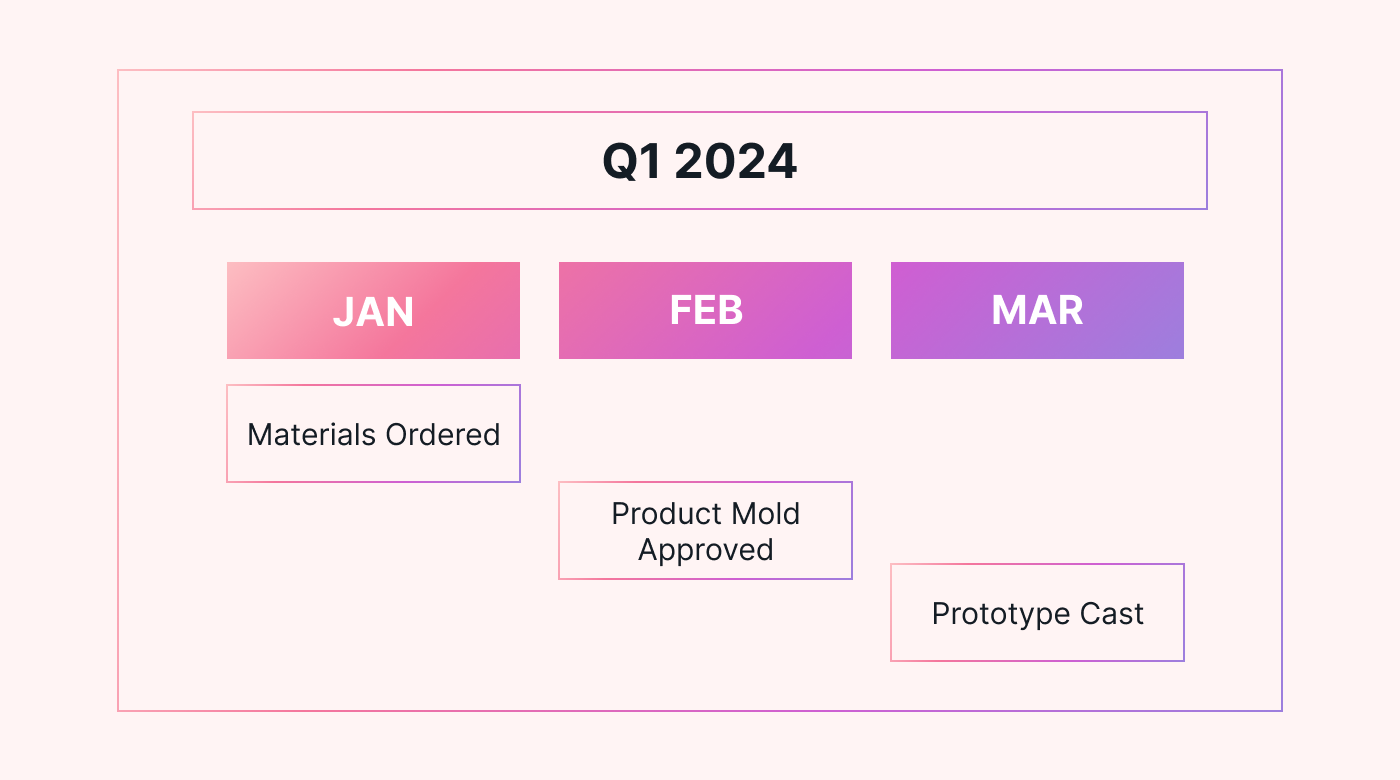 |
Waterfall roadmaps are best suited to single teams where each step depends on the previous, and tasks can't be completed concurrently.
An example of this is commonly seen in manufacturing. Parts and supplies must be obtained before each production stage can be completed. Each part builds on the next and can't be completed concurrently.
Ultimately, the structure you use to represent your product roadmap visually will be the one that works best for your team—factor in your style of work and your type of organization. You can play around with many product roadmap templates once you have completed the planning and research steps to create them. Choose the one that's right for you and your team.
What’s next for your product roadmap?
Now you know how to create detailed, strategic roadmaps and ensure they align with business strategy and user needs.
But how do you (now) use this roadmap through the production phase?
Automate your product delivery process with Motion.
Now that your milestones are clearly defined, they can be broken down into tasks in Motion's Intelligent Calendar. Assign these tasks to team members automatically and track their progress according to their priorities.
You can automatically add tasks to your team members' calendars for a seamless workflow. Set start and completion dates for a visual overview of how your roadmap will be executed.
Additionally, you can attach your product roadmap as a project document. This will make it centrally available for the team to access as needed. You can also use it as a debriefing tool. Simply compare it to the tracked history of the project in Motion.
Pairing your completed product roadmap with Motion's Intelligent Calendar gives you a comprehensive product delivery plan and the necessary tools to execute it.





